
number of registered air carriers: 99 (2020)
inventory of registered aircraft operated by air carriers: 7,249
annual passenger traffic on registered air carriers: 889.022 million (2018)
annual freight traffic on registered air carriers: 42,985,300,000 (2018) mt-km
N
15,873 (2024)
7,914 (2024)
1,984,321 km natural gas, 240,711 km petroleum products (2013)
total: 293,564.2 km (2014)
standard gauge: 293,564.2 km (2014) 1.435-m gauge
total: 6,586,610 km (2012)
paved: 4,304,715 km (2012) (includes 76,334 km of expressways)
unpaved: 2,281,895 km (2012)
41,009 km (2012) (19,312 km used for commerce; Saint Lawrence Seaway of 3,769 km, including the Saint Lawrence River of 3,058 km, is shared with Canada)
total: 3,533 (2023)
by type: bulk carrier 4, container ship 60, general cargo 96, oil tanker 68, other 3,305
note - oceangoing self-propelled, cargo-carrying vessels of 1,000 gross tons and above
major seaport(s):
Atlantic Ocean: Baltimore, Charleston, Hampton Roads, New York/New Jersey, Savannah
Pacific Ocean: Long Beach, Los Angeles, Oakland, Seattle/Tacoma
Gulf of Mexico: Houston
oil terminal(s): LOOP terminal, Haymark terminal
container port(s) (TEUs): Charleston (2,751,442), Hampton Roads (3,522,834), Houston (3,453,220), Long Beach (9,384,368), Los Angeles (10,677,610), New York/New Jersey (8,985,929), Oakland (2,448,243), Savannah (5,613,163), Seattle/Tacoma (3,736,206) (2021)
LNG terminal(s) (export): Calcasieu Pass (LA), Cameron (LA), Corpus Christi (TX), Cove Point (MD), Elba Island (GA), Freeport (TX), Sabine Pass (LA)
note - two additional export facilities are under construction and expected to begin commercial operations in 2023-2024
LNG terminal(s) (import): Cove Point (MD), Elba Island (GA), Everett (MA), Freeport (TX), Golden Pass (TX), Hackberry (LA), Lake Charles (LA), Neptune (offshore), Northeast Gateway (offshore), Pascagoula (MS), Sabine Pass (TX)
river port(s): Baton Rouge, Plaquemines, New Orleans (Mississippi River)
cargo ports: Baltimore, Baton Rouge, Corpus Christi, Hampton Roads, Houston, Long Beach, Los Angeles, New Orleans, New York, Plaquemines (LA), Tampa, Texas City
cruise departure ports (passengers): Baltimore, Long Beach, Miami, Port Everglades, Port Canaveral, Seattle
Night view the port of Savannah, Georgia. Photo courtesy of the US Coast Guard.: 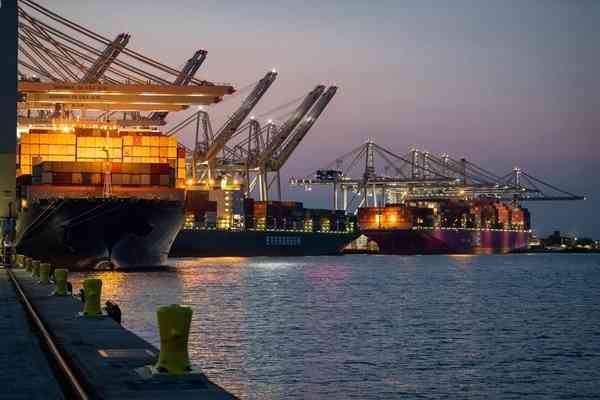 View of the port of Charleston, South Carolina. Photo courtesy of the US Coast Guard.:
View of the port of Charleston, South Carolina. Photo courtesy of the US Coast Guard.: 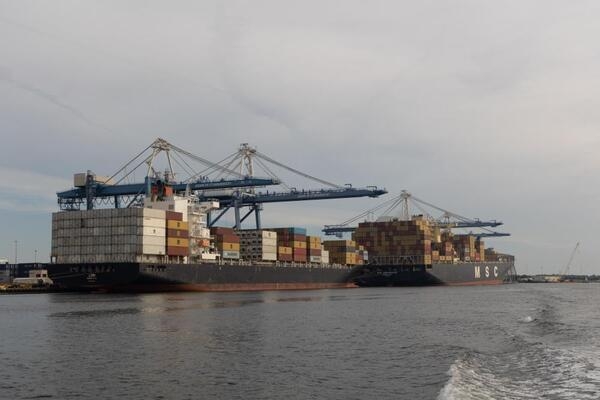 View of the port of Los Angeles, California. Photo courtesy of US Coast Guard.:
View of the port of Los Angeles, California. Photo courtesy of US Coast Guard.: 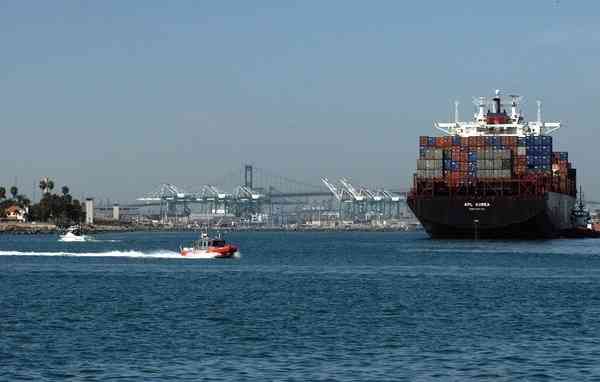 View of the port of Long Beach, California. Photo courtesy of the US Coast Guard.:
View of the port of Long Beach, California. Photo courtesy of the US Coast Guard.: 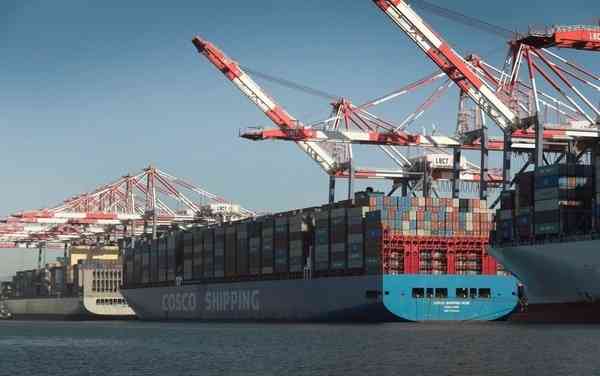 An aerial view of the Golden Pass LNG export terminal at Port Arthur, Texas. Photo courtesy of US Coast Guard.:
An aerial view of the Golden Pass LNG export terminal at Port Arthur, Texas. Photo courtesy of US Coast Guard.:  A view of a liquified natural gas (LNG) carrier docking at the Cove Point, Maryland LNG terminal. Photo courtesy of the US Coast Guard.:
A view of a liquified natural gas (LNG) carrier docking at the Cove Point, Maryland LNG terminal. Photo courtesy of the US Coast Guard.: 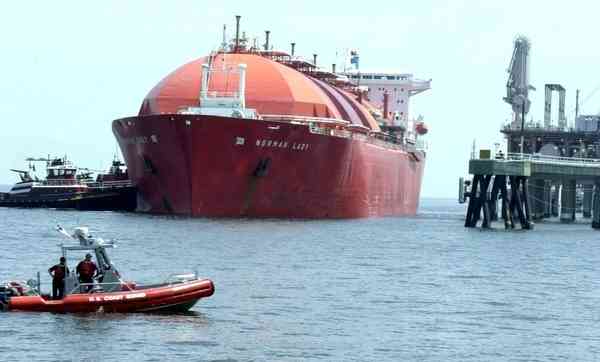 The Marvel Crane, the first liquid natural gas carrier to transport natural gas from the Cameron LNG facility in Louisiana. Photo courtesy of the US Coast Guard.:
The Marvel Crane, the first liquid natural gas carrier to transport natural gas from the Cameron LNG facility in Louisiana. Photo courtesy of the US Coast Guard.: 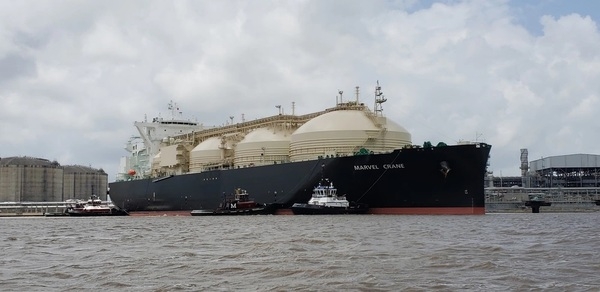
the US operates one PC 1 or 2 class heavy icebreaker, two PC 3 or 4 class medium icebreakers, and two PC 5 or 6 class light icebreakers; the heavy and medium icebreakers carry out various polar missions including opening passage for the annual resupply of McMurdo Station in Antarctica
note - PC indicates a Polar Class vessel: PC 1 - year-round operation in all polar waters (ice thickness >3 m); PC 2 - year-round operation in moderate multi-year ice conditions (ice thickness up to 3 m); PC 3 - year-round operation in second-year ice which may include multi-year ice inclusions (ice thickness up to 2.5 m); PC 4 - year-round operation in thick first-year ice which may include old ice inclusions (ice thickness up to 120 cm); PC 5 - year-round operation in medium first-year ice which may include old ice inclusions (ice thickness up to 70-120 cm); PC 6 - summer/autumn operation in medium first-year ice which may include old ice inclusions (ice thickness up to 30-70 cm)
The US Coast Guard Cutter Polar Star enroute to the McMurdo Station, Antarctica, 15 January 2017.: 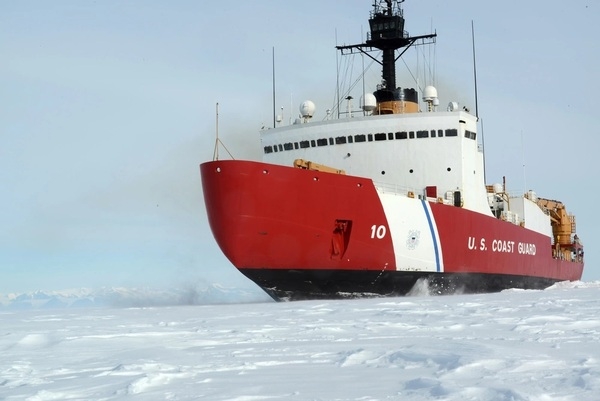 US Coast Guard Cutter Polar Star (WAGB 10) sits hove-to ice on the frozen Ross Sea, Antarctica, on 6 January 2022.:
US Coast Guard Cutter Polar Star (WAGB 10) sits hove-to ice on the frozen Ross Sea, Antarctica, on 6 January 2022.: 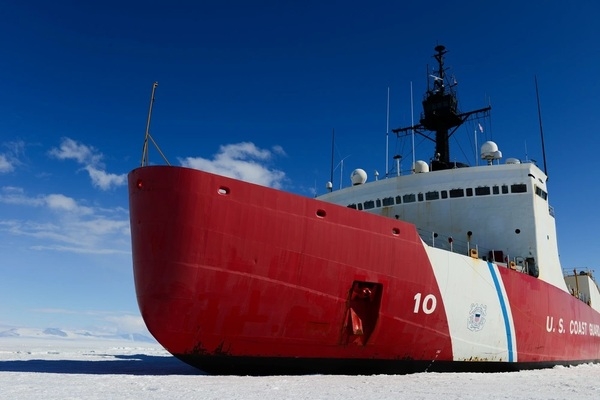 US Coast Guard Cutter Healy, St. John's Bay, Newfoundland 4 June 2000:
US Coast Guard Cutter Healy, St. John's Bay, Newfoundland 4 June 2000: 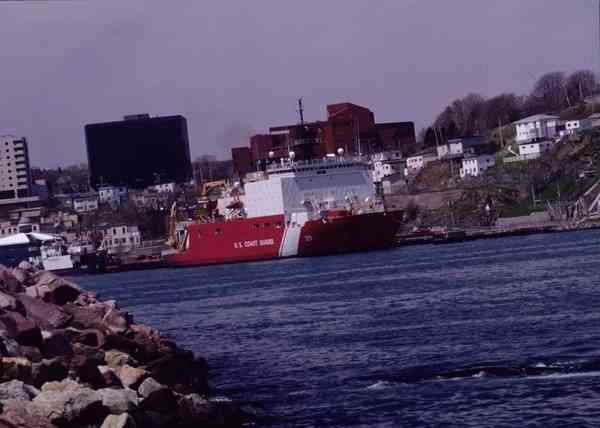 US Coast Guard Cutter Healy (WAGB-20) approaches the pier at Base Seattle on Saturday 20 November 2021.:
US Coast Guard Cutter Healy (WAGB-20) approaches the pier at Base Seattle on Saturday 20 November 2021.: 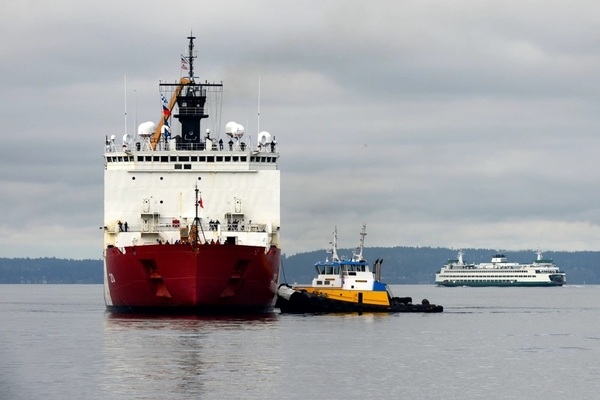 US Coast Guard Cutter Healy (right) meets up with Canadian Coast Guard Ship Louis S. St. Laurent in the Arctic Ocean on 25 September 2008.:
US Coast Guard Cutter Healy (right) meets up with Canadian Coast Guard Ship Louis S. St. Laurent in the Arctic Ocean on 25 September 2008.: 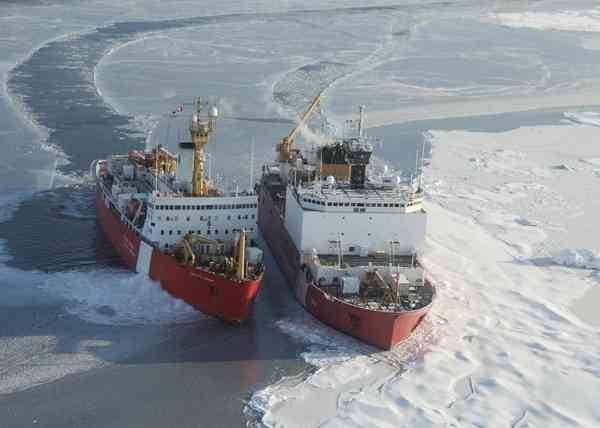
NOTE: The information regarding United States on this page is re-published from the 2024 World Fact Book of the United States Central Intelligence Agency and other sources. No claims are made regarding the accuracy of United States 2024 information contained here. All suggestions for corrections of any errors about United States 2024 should be addressed to the CIA or the source cited on each page.
This page was last modified 04 May 24, Copyright © 2024 ITA all rights reserved.